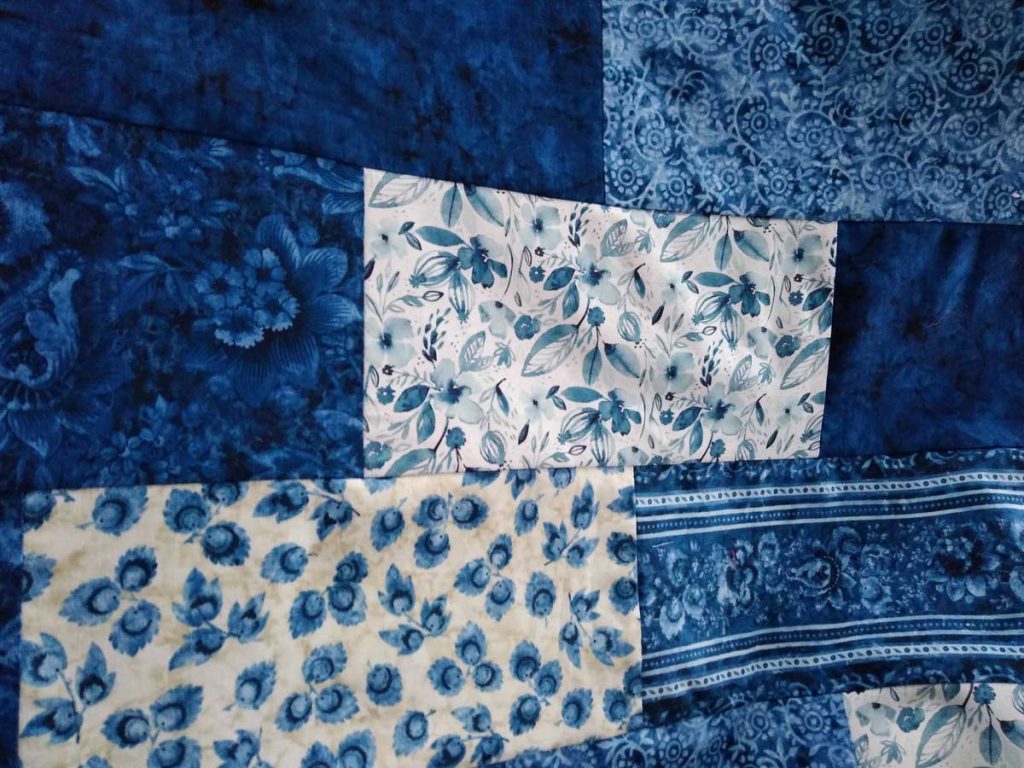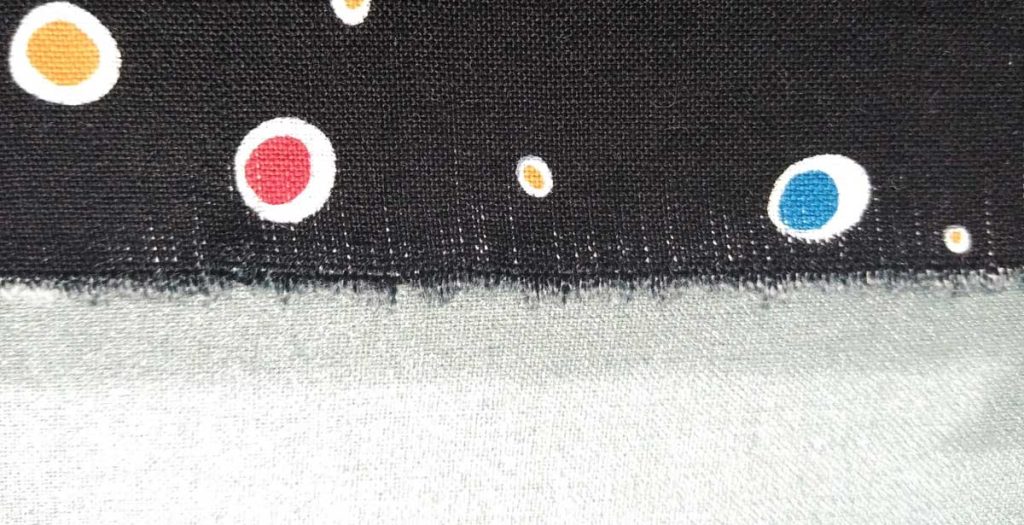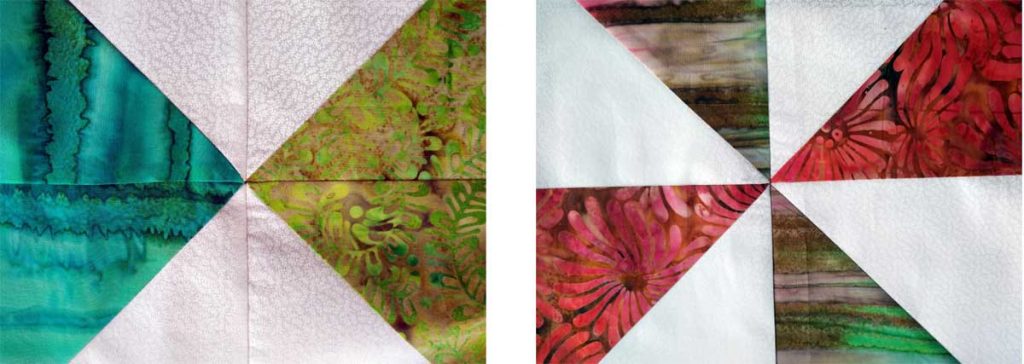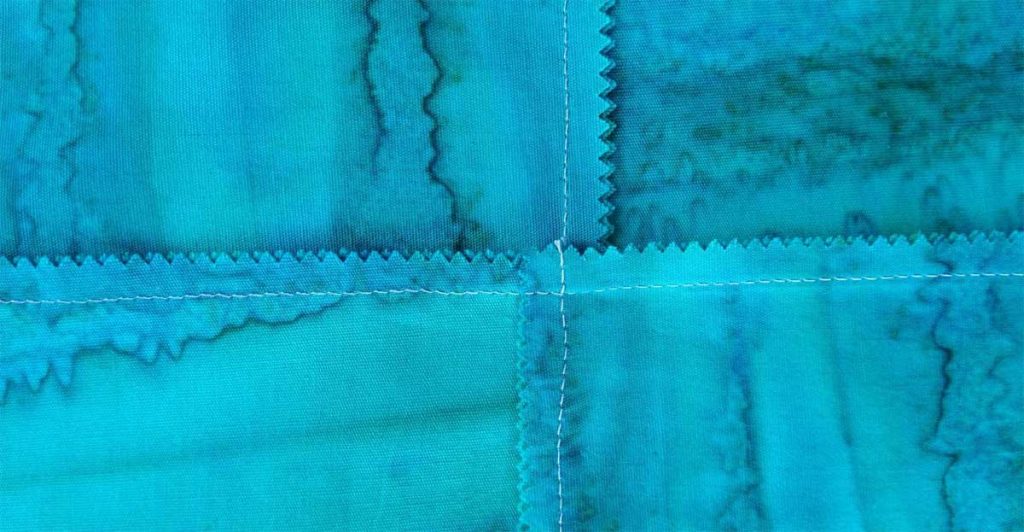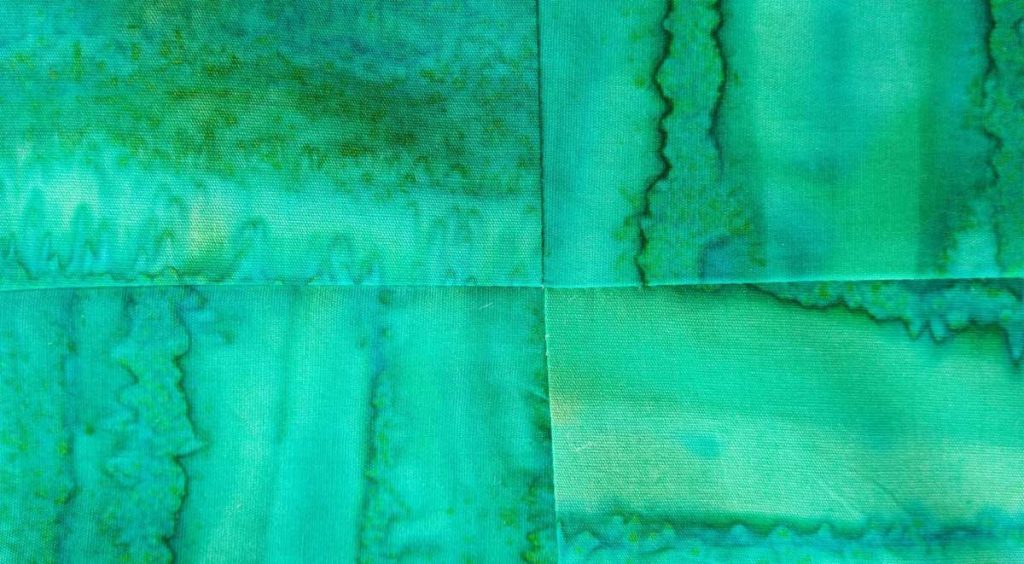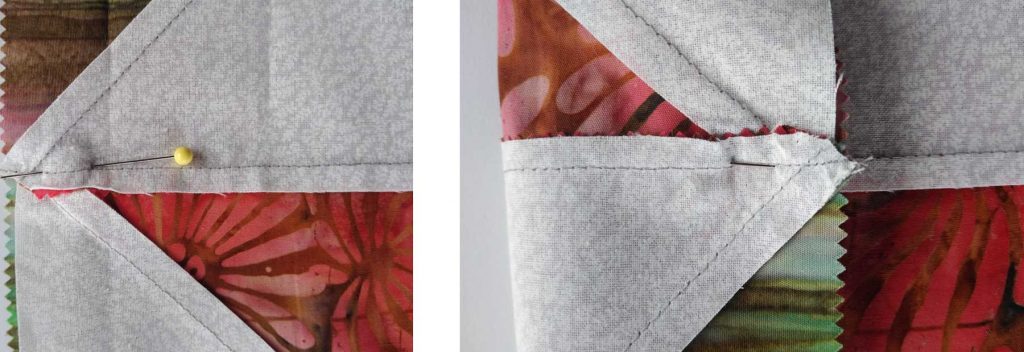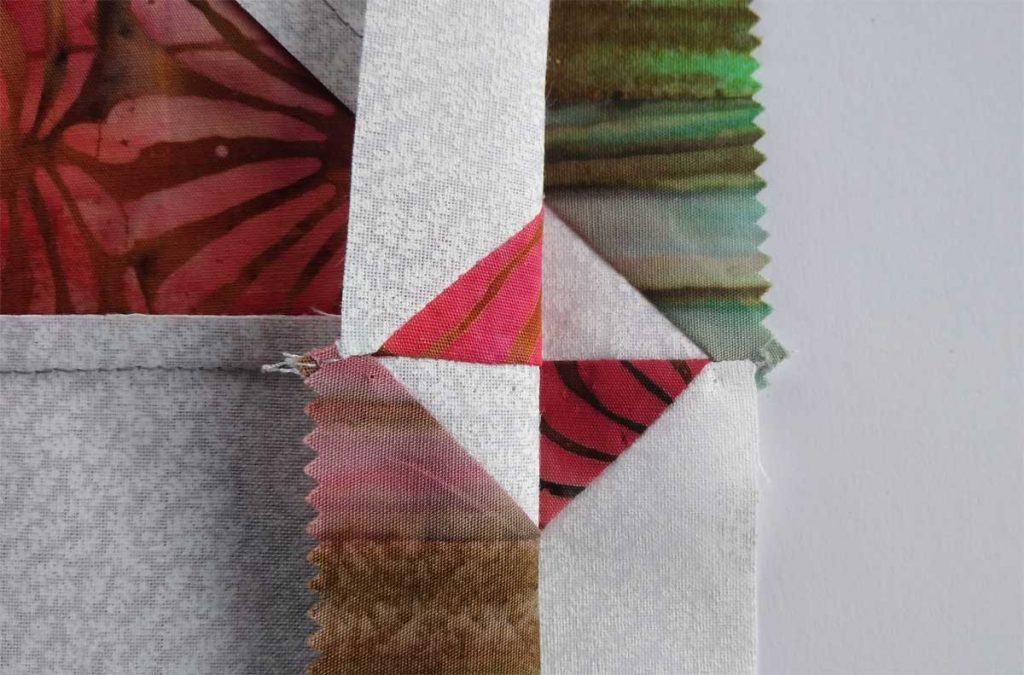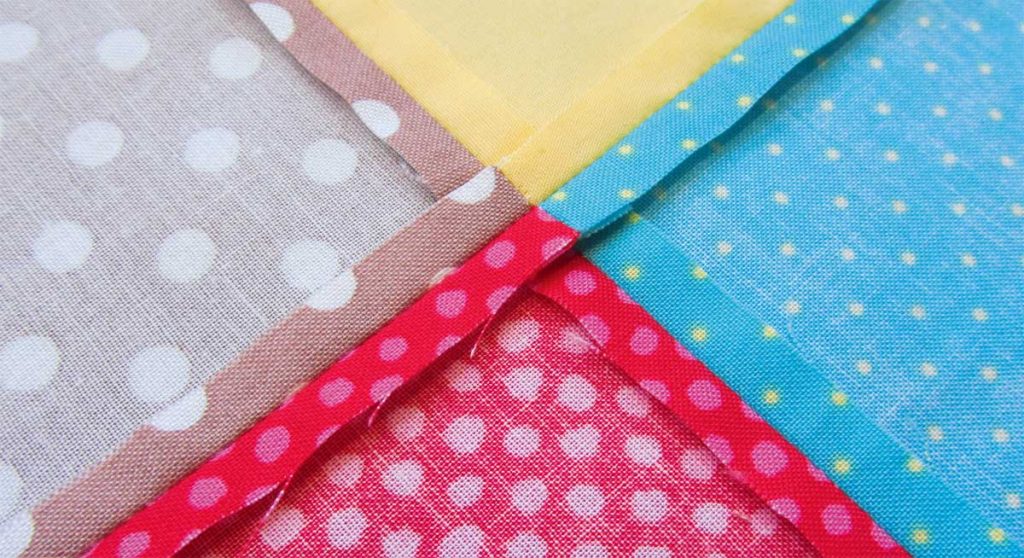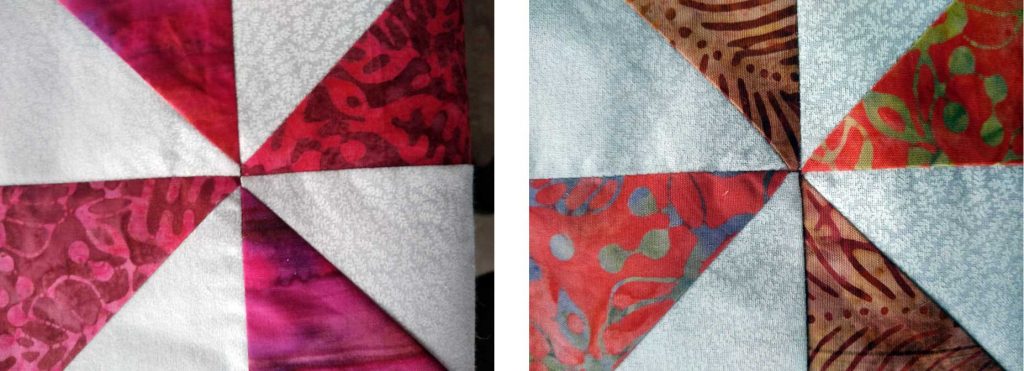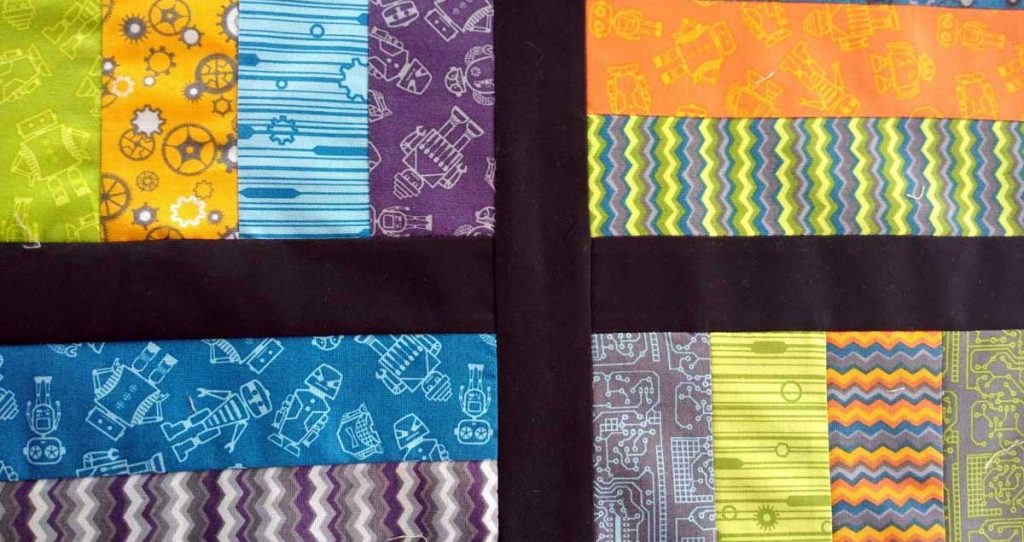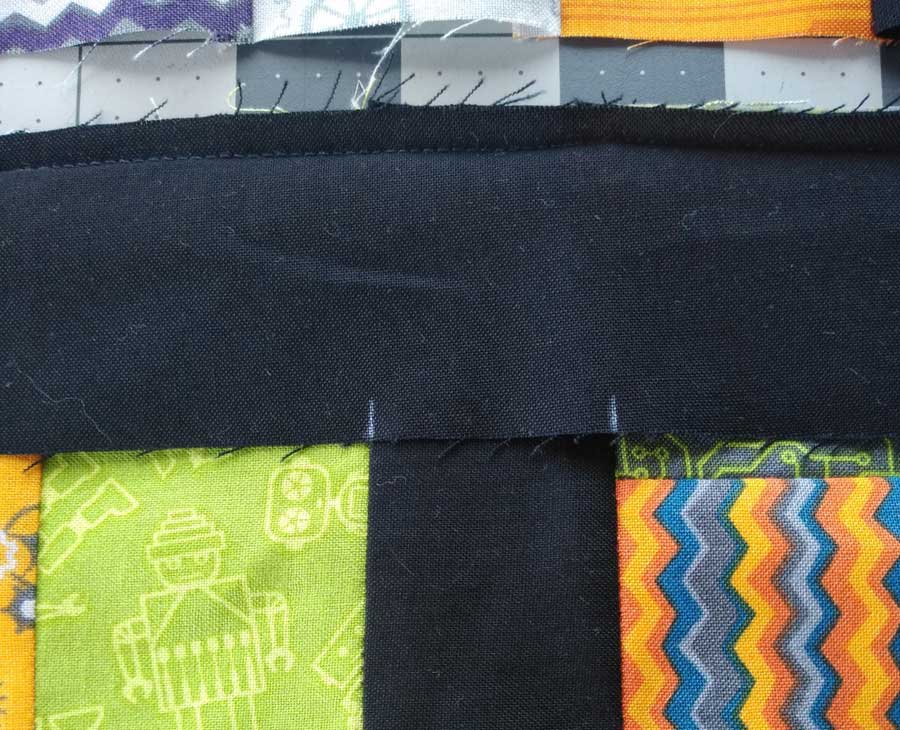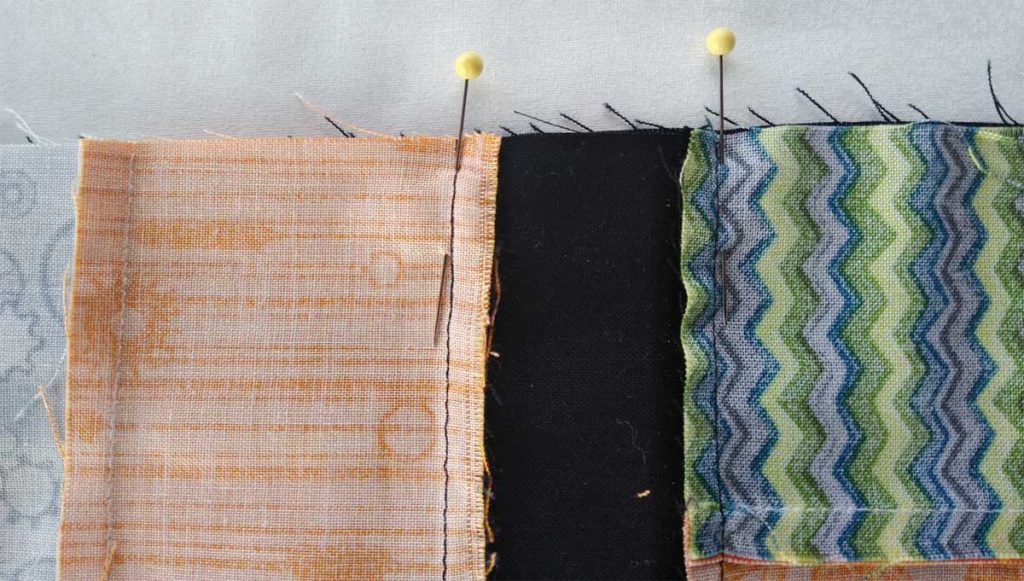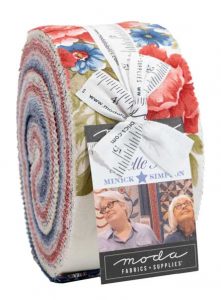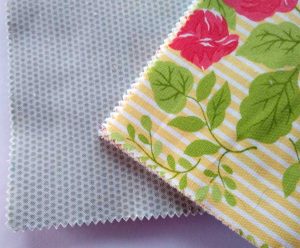Today we offer a triple treat of quilting trivia. From understanding mitered corners, to explaining fussy cuts, and finally, navigating the width of a quilt border. Grab your rotary cutter and let’s patch together some knowledge that’s as snug as a perfectly quilted blanket!

How wide should a quilt border be?
A quilt border can be any width you want, depending on the finished look you like. There can a single border around the outer quilt top edge or there can be multiple borders of varying widths, again depending on the look you like or the pattern you’re following. Several factors should be considered when choosing border widths.
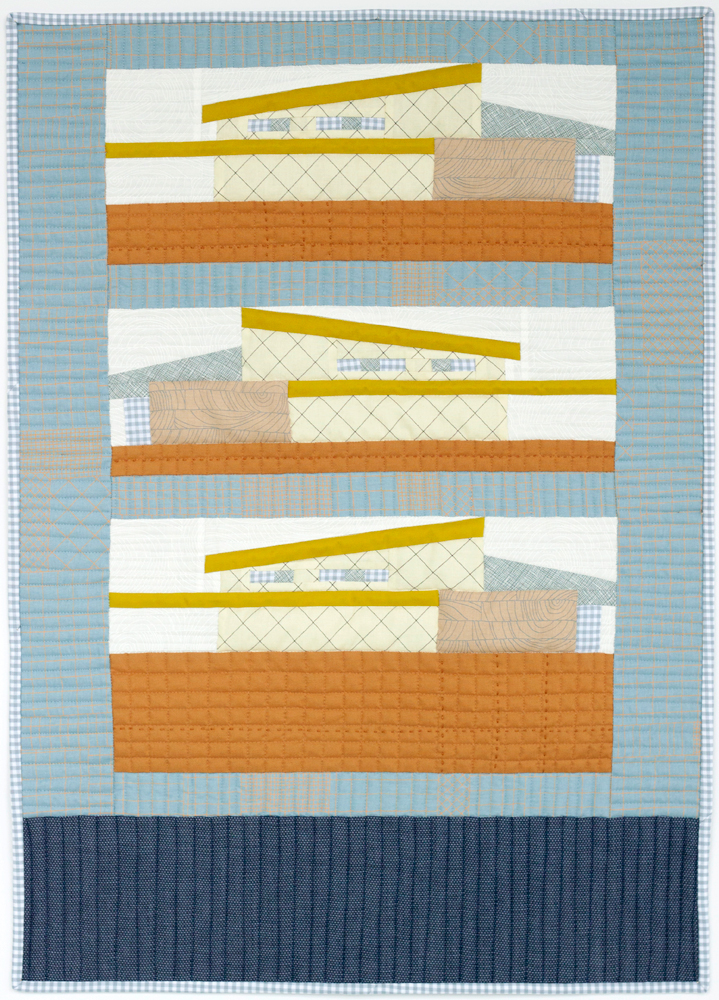
The first question to ask yourself might be how much bigger you want the quilt to be, as this can help determine how many and what width of borders you need to add to the pieced center.
The size of the fabric print can influence the border width. Larger prints beckon wider borders to showcase the design. If you use a narrow border with an oversized print, you can’t discern the beauty of the print motifs. The border fabric itself can help determine the width, as often stripes or floral stripes are used for borders and they’re a specific width to showcase an entire pattern.
If you plan to do custom quilting on the border, you may want a wider area to showcase the stitching.
When using multiple borders, a common rule of thumb for determining widths is that a border should be about 1 ½ times larger than the previous border. For example, if an inner border finishes at 1”, the second border should be approximately 1 ½”. In most instances, the narrowest border is on the inside, working outward to the widest.
For those who prefer numbers, outer borders can range from 3” wide on wall quilts up to 7” or more for king-size quilts.
Sometimes you may not want to put borders on all four sides of a quilt. Some modern quilters often use borders on only two sides, either adjacent or opposite, or they vary the border size from side to side and/or top to bottom, or even use different fabrics for different border locations.
Should I miter the border corners or lap them?
Again, this is a matter of preference. Lapped borders are easier to sew than mitered borders and they’re perfect for allover prints. But, if your border fabric is a stripe or floral stripe pattern, mitered borders are more attractive as the design comes together at a 45° angle, rather than lapping.
Borders can also be pieced, either purposefully or from scraps, and scrap borders can also be lapped or mitered, depending on the desired look.
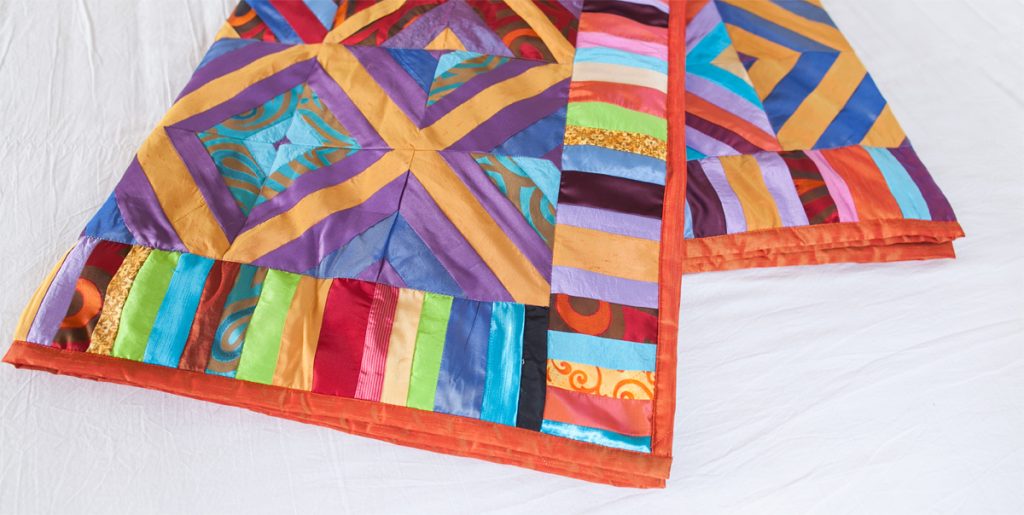
My quilt pattern says to fussy-cut the blocks. What does that mean?
Fussy-cutting is a technique in which a fabric motif is strategically placed within a quilt block. Most commonly, a design element is centered in a block for emphasis.
Garment sewers often fussy-cut fabric so that motifs are placed in a specific place on the garment—a collar, pocket, front band, etc.
Fussy-cutting requires a template or pattern piece you can see through for the easiest cutting. Just place it over the desired design and cut around it. DON’T FORGET that you need seam allowances, so make your template or pattern to include those.
Many prints are directional, so keep that in mind when cutting pieces, so that the design is oriented the proper way in the finished project. For example, all the elephants should be standing on their feet, not some on their heads.
Fussy-cutting normally takes more fabric than not fussy-cutting, as you may not be able to use the entire length or width, and you don’t want to end up with partial motifs during your cutting process. The extra amount needed depends on the repeat and size of the design motif you’re showcasing, so there’s no hard and fast rule about how much extra to buy. Bring your pattern to the store and see how many you can cut out of a given amount of yardage.
Some fabrics may offer multiple opportunities for fussy-cutting within the same piece. For example, a zoo animal may be the center for some blocks, a different animal for others and perhaps a rainbow motif from the same fabric for others. This allows for less waste than choosing a single motif focus.
~Linda Griepentrog is the owner of G Wiz Creative Services and she does writing, editing and designing for companies in the sewing, crafting and quilting industries. In addition, she escorts fabric shopping tours to Hong Kong. She lives at the Oregon Coast with her husband Keith, and three dogs, Yohnuh, Abby, and Lizzie. Contact her at gwizdesigns@aol.com.





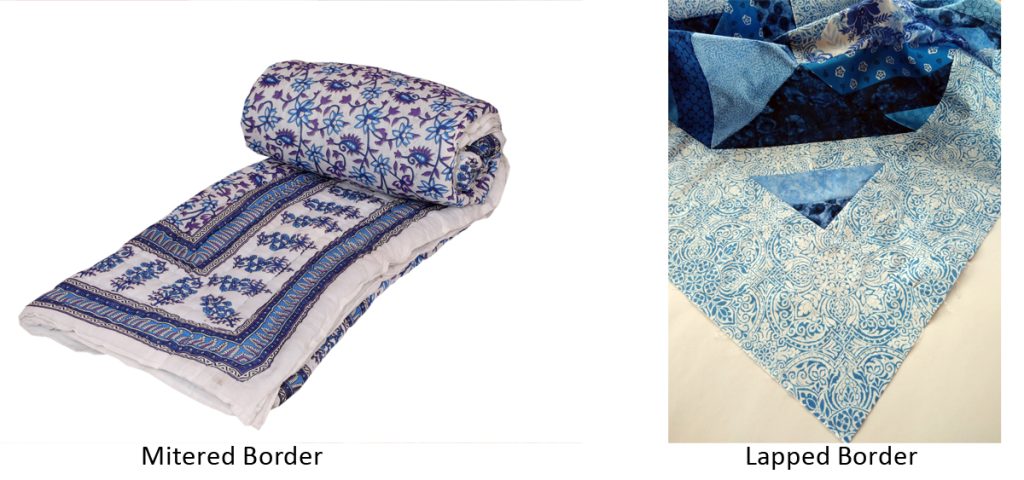
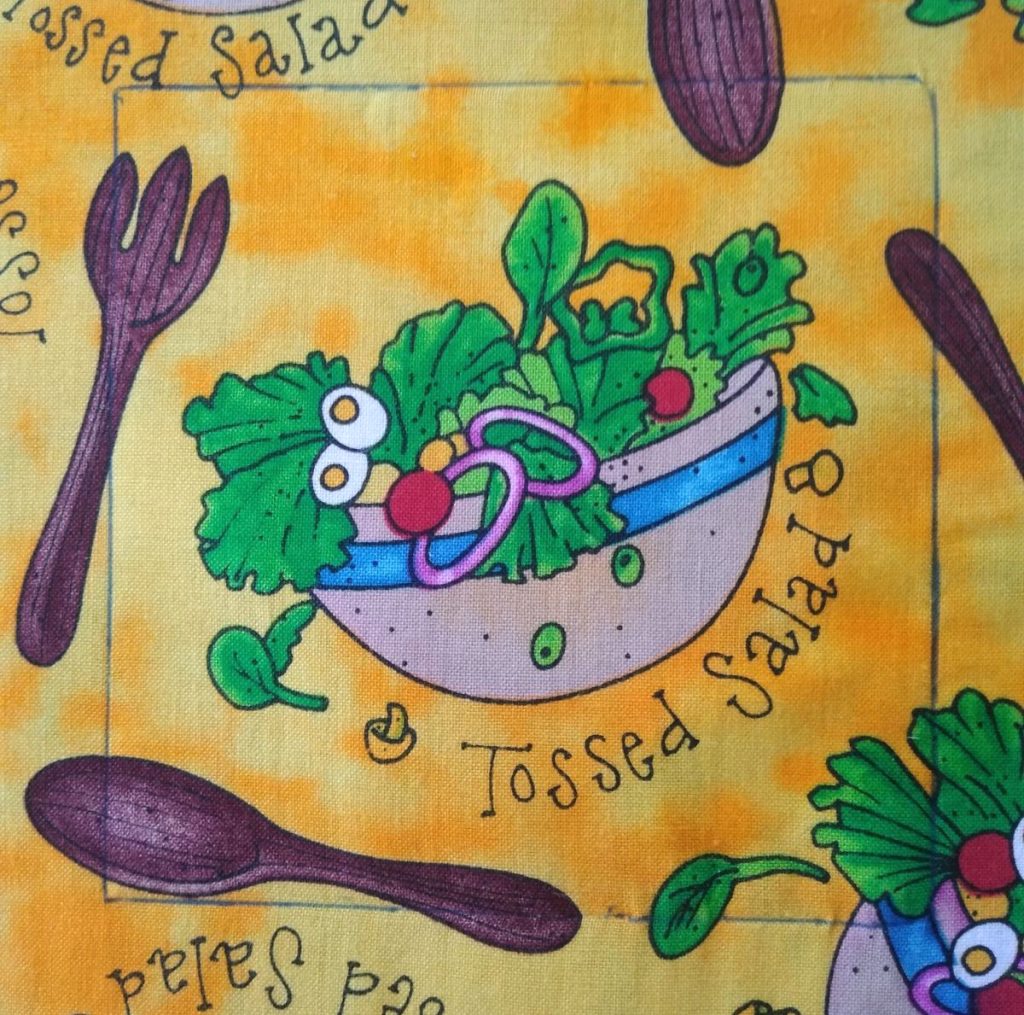
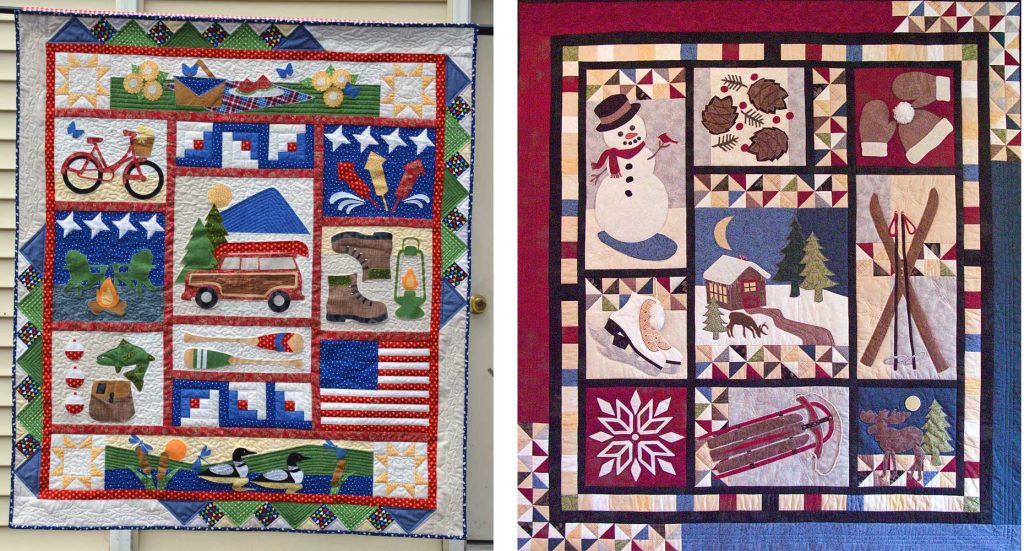
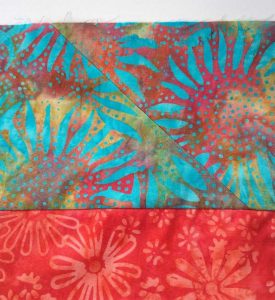
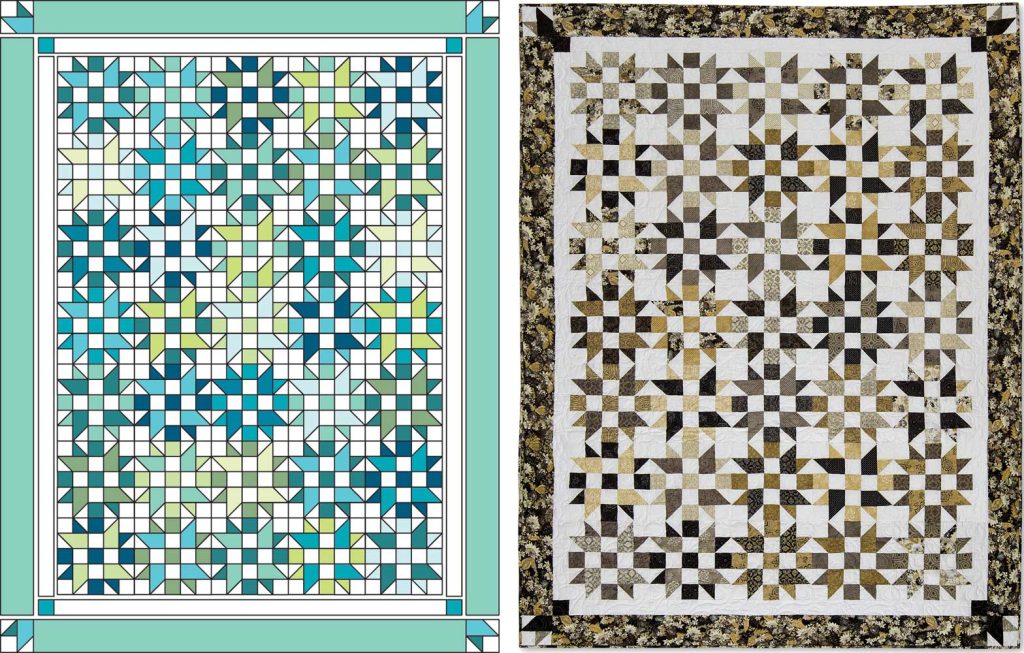
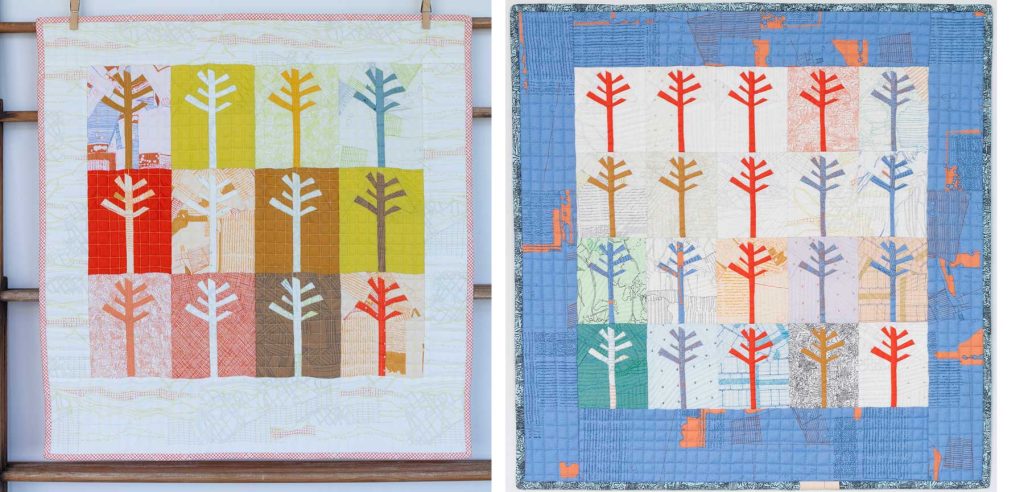
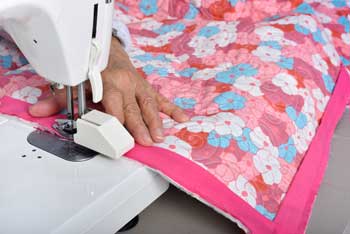 Quilt bindings can be single or double layer, depending on preference, but it’s worth noting that single-layer bindings do not offer as much “protection” to the quilt edge as double-layer ones do. If a quilt is going to be used regularly and/or washed, the added layers of a double binding will wear longer. A single-layer binding is often used on smaller items like table runners and wall hangings and it reduces bulk in comparison to the double-layer binding.
Quilt bindings can be single or double layer, depending on preference, but it’s worth noting that single-layer bindings do not offer as much “protection” to the quilt edge as double-layer ones do. If a quilt is going to be used regularly and/or washed, the added layers of a double binding will wear longer. A single-layer binding is often used on smaller items like table runners and wall hangings and it reduces bulk in comparison to the double-layer binding.